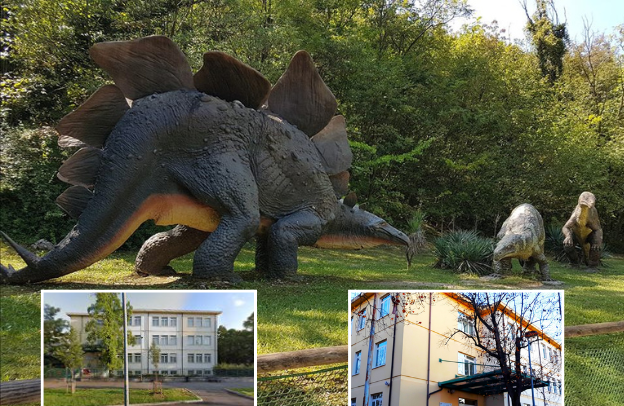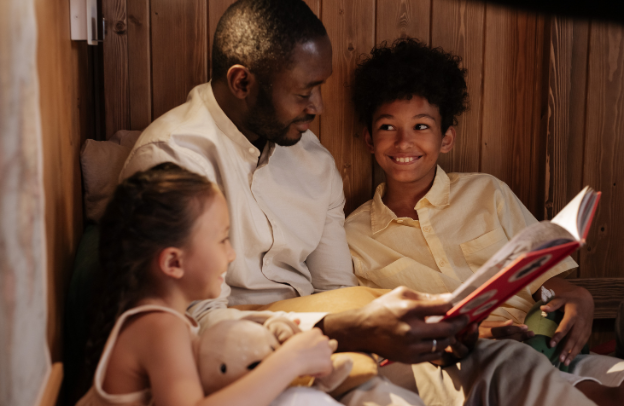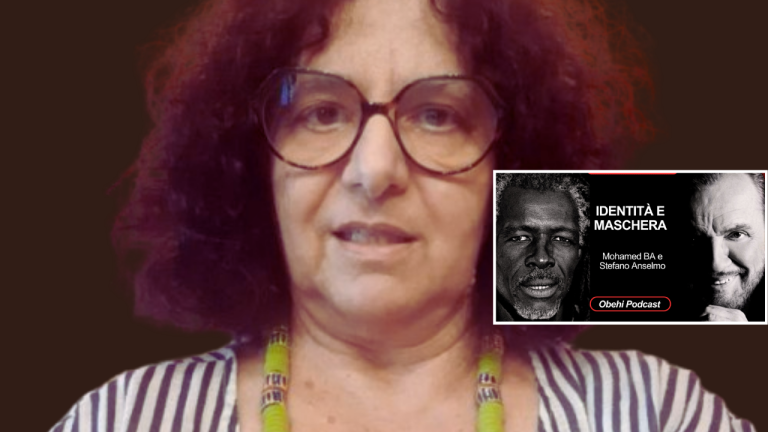School Trip to Parco Natura Viva: The Power of School Excursions and Storytelling in Shaping Young Minds

It was a bright and exciting morning today, April 10, at Scuola Primaria Giuseppe Maggi in Porto San Pancrazio, Verona. You could feel the enthusiasm in the air as students gathered outside, backpacks slung over their shoulders, ready for the big day. Their destination? Parco Natura Viva—a well-loved safari park and zoo in Bussolengo, just a short drive from the city. But this isn’t just about kids going to see animals. It’s about something bigger.
Learn How to Leverage Your Story through our Story To Asset Framework.
Think about it. Have you ever noticed how a simple school trip can light up a child’s imagination? How seeing something new—really seeing it—can unlock a whole world inside them? What if those sparks of wonder turn into stories, and those stories shape who they become?
That’s what we’re diving into here: how one special excursion, a curious little boy, and a love for storytelling show us what’s possible when we give children the space to dream out loud.
What is Parco Natura Viva?
Tucked into the rolling hills near Lake Garda in Bussolengo, Verona, Parco Natura Viva began as a bold and visionary idea. In 1933, architect Alberto Avesani founded a farm on 64 hectares of land, which decades later would become the foundation for something extraordinary. You can learn more by visiting the website of Natura Viva Pack.
Inspired by a deep love for animals and nature, Avesani and his wife conceived the idea of a zoological park in 1965. By June 21, 1969, they opened the first 10-hectare section—now known as the Wildlife Trail—welcoming visitors to observe both native and exotic species in thoughtfully designed habitats.
Originally named Garda Zoo Park, the space quickly became a unique destination for education, family outings, and a closer connection to the animal kingdom.
Over the years, Parco Natura Viva expanded with purpose and passion. In 1973, the Safari Park was added, allowing visitors to drive through open enclosures of African mammals and birds—an exciting first for the region.
By 1978, the park introduced new immersive zones, including the Aquaterrarium, Tropical Greenhouse, and Italy’s first Dinosaur Park featuring life-size models of prehistoric reptiles.
A major reorganization in 1985 reshaped the park into a modern conservation center, emphasizing species protection, biodiversity, and sustainability. Celebrating its 50th anniversary in 2019, Parco Natura Viva now stands not only as a beloved family destination but also as a key player in global efforts to protect endangered wildlife—proof of how one man’s dream evolved into a living legacy.
I have to say, what truly fascinates me about Verona is the thoughtful way storytelling is woven into everyday life, especially across business, travel, and education. It’s inspiring to see how intentionally the school system introduces children to these concepts from such a young age.
I think this helps to tap into their naturally vivid imaginations and encourages them to explore the world around them with curiosity and wonder.
This morning, standing outside Scuola Primaria Giuseppe Maggi on Via Marconcini 18, with two buses (one large and one smaller) ready to take the students to Parco Natura Viva, the excitement was almost electric.
One parent smiled as she told me about her daughter, “She was up by 6 a.m., backpack ready. She’s never been so excited.” Another dad added, “My son has been preparing for this day for weeks. He couldn’t stop talking about it.”
Among the group was my son, Efua, bubbling with anticipation. For weeks, he had been singing about the trip, counting down the days and dreaming of lions, elephants, and yes—dinosaurs, thanks to his favorite cartoons.
His joy was contagious, a reminder of how powerful experiences like this can be in shaping a child’s sense of wonder.
The Power of Storytelling in Nurturing Creativity and Connection
I still find myself wondering exactly how Efua fell in love with storytelling. But deep down, I think I’ve always known. Like many children of the African diaspora, he carries within him a powerful legacy, one where stories aren’t just for fun but serve as vessels of wisdom, identity, and connection.
According to The Jai Institute for Parenting, “Neurobiologically, storytelling activates our mirror neurons—the ones that help us experience what others are feeling.” When you tell your child a story, said the article, you are not just passing the time or distracting them—you’re creating a bridge of empathy and understanding.
This is why I think this is truly a great educational initiative. I will talk more about it later in this article. Well, storytelling has always been part of our home, even if it’s not something we ever planned out. It just lives in the way we talk, share, and remember.
Every evening, Efua would ask—sometimes insist—that his mother or I tell him a story before bed. Sometimes they were traditional Esan tales, stories he couldn’t fully understand yet, especially when we spoke in our native language.
But that didn’t stop him. He listened anyway, wide-eyed and curious, and somehow the meaning found its way to him through tone, rhythm, and emotion.
See also Esan History & Tradition – All You Need To Know About The Esan People Of Nigeria
Around the dinner table, or during quiet moments at home, we often talk about everything—work, family back in Nigeria, our hopes for the future. And Efua? He was always listening, quietly taking it all in, storing the stories in his own way.
In our Esan culture in Nigeria, storytelling isn’t just a pastime—it’s a way of shaping the world. And even at his young age, Efua seems to grasp that truth. Maybe that’s why he became so fascinated with what I do.
His Reaction To My Podcast Hosting From Home
I believe he’s been inspired by watching me host podcast interviews from home, where I connect with people in English, Italian, and Esan—sharing authentic stories from all corners of the diaspora.
One day, he looked at me and said proudly, “You’re Obehi Storyteller Number One, and I’m Storyteller Number Two.” And just like that, something clicked.
Soon after, he began spinning his own tale about two mismatched socks—one blue, one red. I helped him record it, and we worked together to transcribe it into words. What started as a bedtime idea has now grown into his first book, The Story of Blue & Red Socks, told across twelve chapters. We are still working on it and hope to get it published by the end of this year.
See also The Power of Mentorship in Transforming Lives: Dr. Adeola Folorunso’s Vision for Impactful Change
Watching him take an idea and transform it into a story has been one of the most rewarding moments of my parenting journey.
It’s a powerful reminder that when we give our children the space to share their stories, we’re not just helping them find their voice—we’re helping them tap into something far greater than themselves.
As I mentioned earlier, I truly appreciate how the Verona school system introduces young children to these meaningful destinations. Now, let’s take a closer look at why this is so important.
Obehi Ewanfoh and his Podcast
Obehi Ewanfoh’s passion for storytelling runs deep, drawing on his rich Nigerian heritage and his commitment to social impact. As a storytelling coach for Social Impact Entrepreneurs, Obehi has dedicated his life to helping individuals find their voices and harness the power of their personal and cultural narratives.
Through his “Story to Asset” framework, he empowers people to transform their stories into tools for change, helping them make a real difference in the lives of the communities they serve.
His platform, The Obehi Podcast, has become a cornerstone for global discussions around identity, culture, and social entrepreneurship. Each episode explores diverse topics, from African identity and diaspora experiences to cultural preservation and agribusiness. All leading to creating a space where listeners from all walks of life can engage with the complexities of their heritage while fostering meaningful connections.
Through his podcast, Obehi has built a bridge between African communities worldwide, exploring themes that resonate deeply with people of African descent. His work, which spans writing, documentaries, and live events, showcases his commitment to preserving African cultural legacies while pushing for positive change.
From his early days in Uromi, Nigeria, where he wrote his first book (Round My Mind: The Battle for Okodo), to his current advocacy for the African diaspora, Obehi’s storytelling is driven by a desire to reconnect people with their roots.
His Creating the Blackness of Africa, documentary film won an award for challenging stereotypes of African identity, while his Pan-Africanism: Testing Ideas on Reality film dives into the challenges of implementing Pan-African ideals in modern politics.
Through his work, Obehi continues to inspire a new generation to share their stories, understand their history, and use their voices to shape a better future.
What Are The Benefits Of School Excursions For Students?
School excursions are more than just a break from the classroom—they are an invaluable part of a child’s educational journey, offering experiences that can’t be replicated through textbooks or lessons.
According to an article published on European Study Tours, “Students learn best when they can see, hear, and experience things first-hand. Opening students’ eyes to bigger concepts is a crucial part of education, and school trips answer the requirements of all five senses.”
In Verona, it’s heartening to see the local school system recognizing the importance of taking children beyond the walls of their classrooms, to locations like Parco Natura Viva. This excursion is not just about seeing animals or enjoying a day out; it’s about bringing classroom lessons to life in a tangible way.
For example, a trip to a safari park reinforces lessons in biology, environmental science, and geography, offering students a deeper understanding of the world around them.
When students step into a new environment with new teachers or instructors, the learning dynamic shifts, often helping them retain information in ways that traditional classroom settings cannot.
What makes excursions so impactful is that they engage children’s senses and curiosity in ways that ignite excitement and energy. The anticipation of a trip sparks enthusiasm, making students eager to learn and explore.
Unlike the structured classroom setting, excursions often offer hands-on, interest-driven learning, where students are exposed to new experiences and ideas. For instance, seeing rare wildlife and experiencing the beauty of nature firsthand can open children’s eyes to new cultures, environments, and even inspire future interests or passions.
These experiences also allow for the development of social skills, as students interact in smaller groups and navigate new situations together.
Whether it’s bonding over a shared moment of discovery or collaborating to solve a problem, school excursions provide a unique opportunity for children to build connections with their peers and teachers, leaving a lasting impact that stays with them long after the trip.
The Role of Purpose-Driven Storytelling
The act of storytelling serves multiple purposes within the African diaspora. It preserves history, transmits cultural values, empowers individuals, fosters community bonding, challenges stereotypes, and provides inspiration.
By sharing authentic stories, the African diaspora can challenge misconceptions and present a more nuanced portrayal of their culture and experiences.
In today’s interconnected world, technology plays a crucial role in facilitating storytelling and connecting members of the African diaspora.
Digital platforms, social media, podcasts, and online communities provide accessible spaces for sharing narratives, exchanging ideas, and cultivating dialogue across geographical boundaries.
These platforms enable individuals to find common ground, forge new connections, and strengthen existing networks within the diaspora.
Cultivating the Next Generation of Storytellers
The experiences of Efua and his peers offer valuable insights for educators and parents aiming to foster creativity and cultural awareness in children. Here are some strategies to nurture young storytellers:
- Create Safe Spaces for Expression: Encourage children to share their thoughts and ideas without fear of judgment. This fosters confidence and a sense of belonging.
- Integrate Cultural Narratives: Introduce children to stories from their heritage, helping them understand their roots and the richness of their culture.
- Support Creative Projects: Whether it’s writing a book, drawing, or performing, support children’s creative endeavors to build their storytelling skills.
- Engage with the Community: Participate in cultural events and community gatherings to expose children to diverse narratives and storytelling traditions.
The Enduring Legacy of African Storytelling
The journey of Efua and his classmates is more than just a school trip; it’s a reflection of the enduring power of storytelling within the African diaspora. From the oral traditions of West Africa to modern digital platforms, storytelling remains a vital tool for education, empowerment, and cultural preservation.
As we nurture the imaginations of our children today, we ensure that the rich heritage of our stories continues to inspire and connect generations to come. Here are some of the reasons to keep encouraging Storytelling among children in the African Diaspora:
- Preserving History: Storytelling passes down historical events and experiences, fostering a deeper appreciation of heritage.
- Cultural Transmission: It transmits values, beliefs, and traditions, maintaining a sense of belonging and identity.
- Empowerment: Sharing narratives of resilience and achievement empowers individuals, fostering pride and self-worth.
- Community Bonding: Storytelling brings people together, creating unity and solidarity within communities.
- Inspiration: Narratives provide role models and motivational figures, inspiring individuals to pursue their aspirations.
- Artistic Expression: It offers avenues for creative expression, celebrating cultural richness.
- Education and Awareness: Storytelling educates both the community and the broader public about cultural histories and contributions.
By embracing these aspects, we can continue to harness the transformative power of storytelling, ensuring that our narratives not only entertain but also educate, empower, and connect communities across the globe.
Conclusion – School Trip to Parco Natura Viva
In conclusion, the school trip to Parco Natura Viva is a powerful reminder of the profound impact that educational experiences and storytelling can have on young minds.
By stepping outside the classroom and into a world of discoveries, children not only learn about the natural world but also engage their imaginations and curiosity in ways that textbooks alone can’t.
As they share stories, ask questions, and interact with one another, they develop social skills, spark new interests, and begin to understand the importance of preserving the world around them.
Learn How to Leverage Your Story through our Story To Asset Framework.






